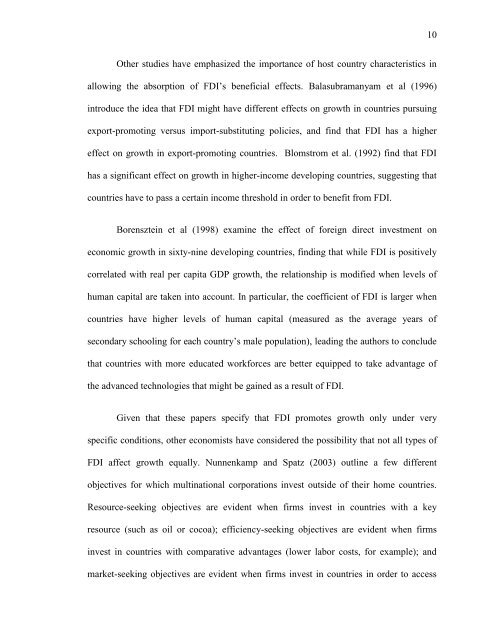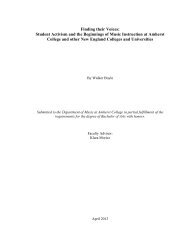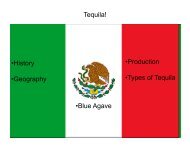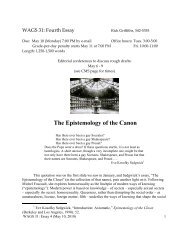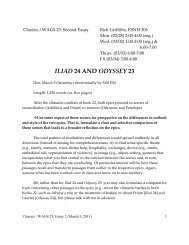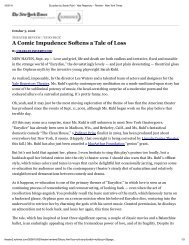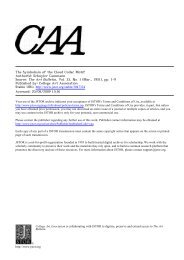Juma, Mary-Ann--Thesis
Juma, Mary-Ann--Thesis
Juma, Mary-Ann--Thesis
Create successful ePaper yourself
Turn your PDF publications into a flip-book with our unique Google optimized e-Paper software.
Other studies have emphasized the importance of host country characteristics in<br />
allowing the absorption of FDI’s beneficial effects. Balasubramanyam et al (1996)<br />
introduce the idea that FDI might have different effects on growth in countries pursuing<br />
export-promoting versus import-substituting policies, and find that FDI has a higher<br />
effect on growth in export-promoting countries. Blomstrom et al. (1992) find that FDI<br />
has a significant effect on growth in higher-income developing countries, suggesting that<br />
countries have to pass a certain income threshold in order to benefit from FDI.<br />
Borensztein et al (1998) examine the effect of foreign direct investment on<br />
economic growth in sixty-nine developing countries, finding that while FDI is positively<br />
correlated with real per capita GDP growth, the relationship is modified when levels of<br />
human capital are taken into account. In particular, the coefficient of FDI is larger when<br />
countries have higher levels of human capital (measured as the average years of<br />
secondary schooling for each country’s male population), leading the authors to conclude<br />
that countries with more educated workforces are better equipped to take advantage of<br />
the advanced technologies that might be gained as a result of FDI.<br />
Given that these papers specify that FDI promotes growth only under very<br />
specific conditions, other economists have considered the possibility that not all types of<br />
FDI affect growth equally. Nunnenkamp and Spatz (2003) outline a few different<br />
objectives for which multinational corporations invest outside of their home countries.<br />
Resource-seeking objectives are evident when firms invest in countries with a key<br />
resource (such as oil or cocoa); efficiency-seeking objectives are evident when firms<br />
invest in countries with comparative advantages (lower labor costs, for example); and<br />
market-seeking objectives are evident when firms invest in countries in order to access<br />
10


